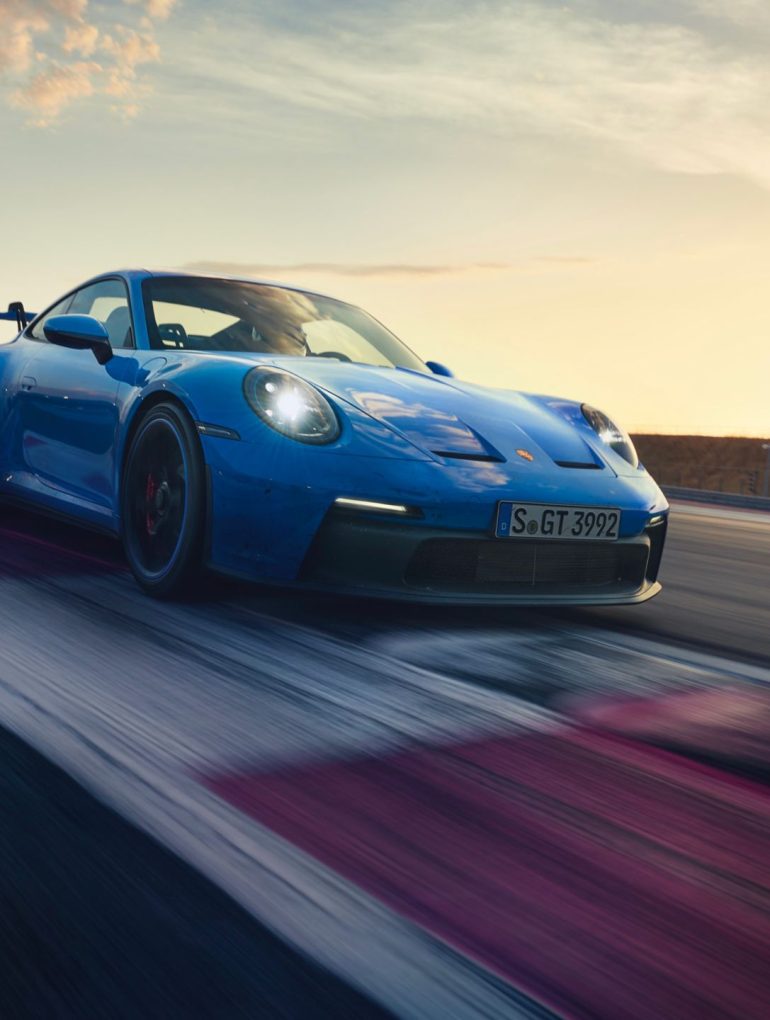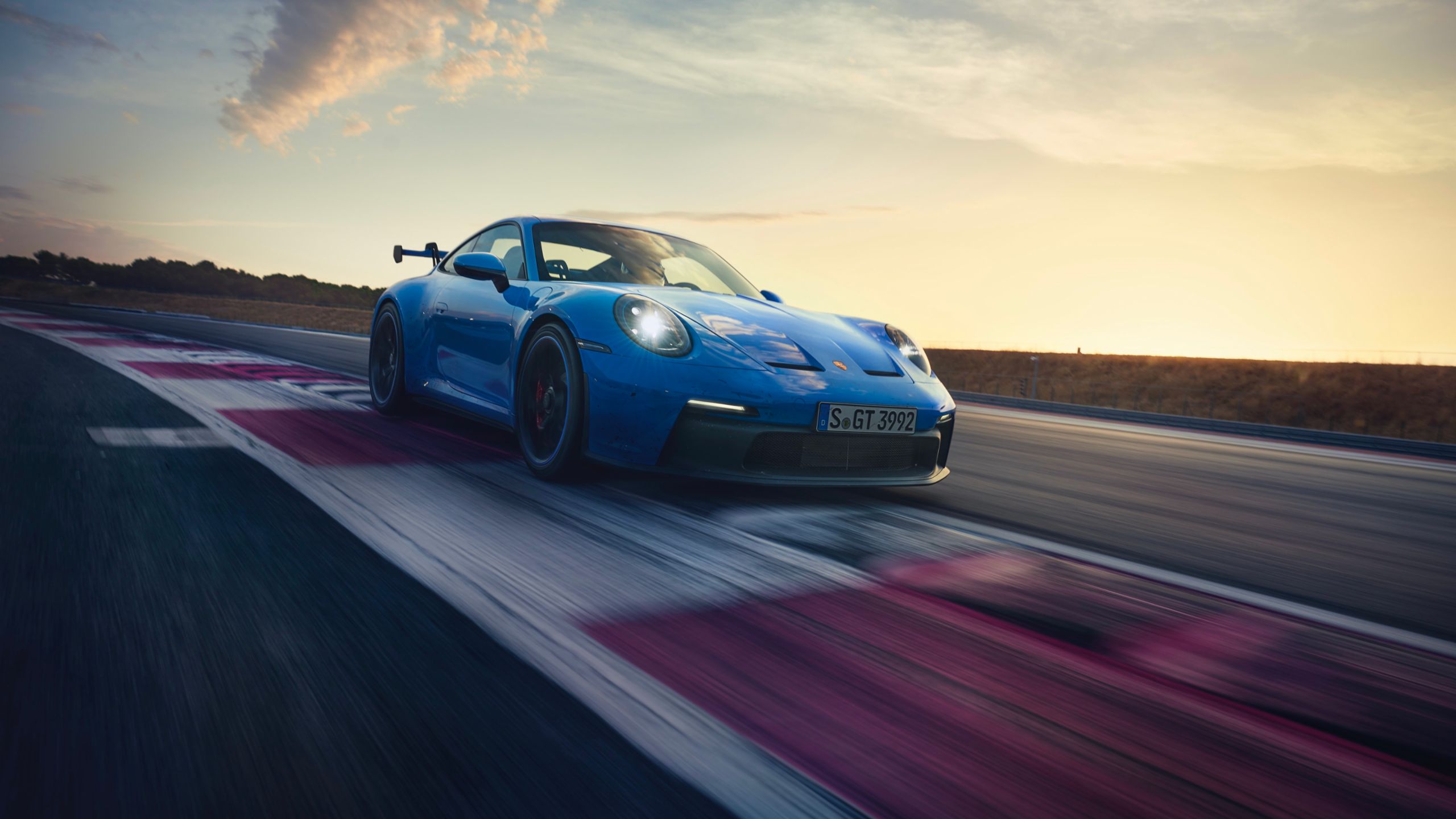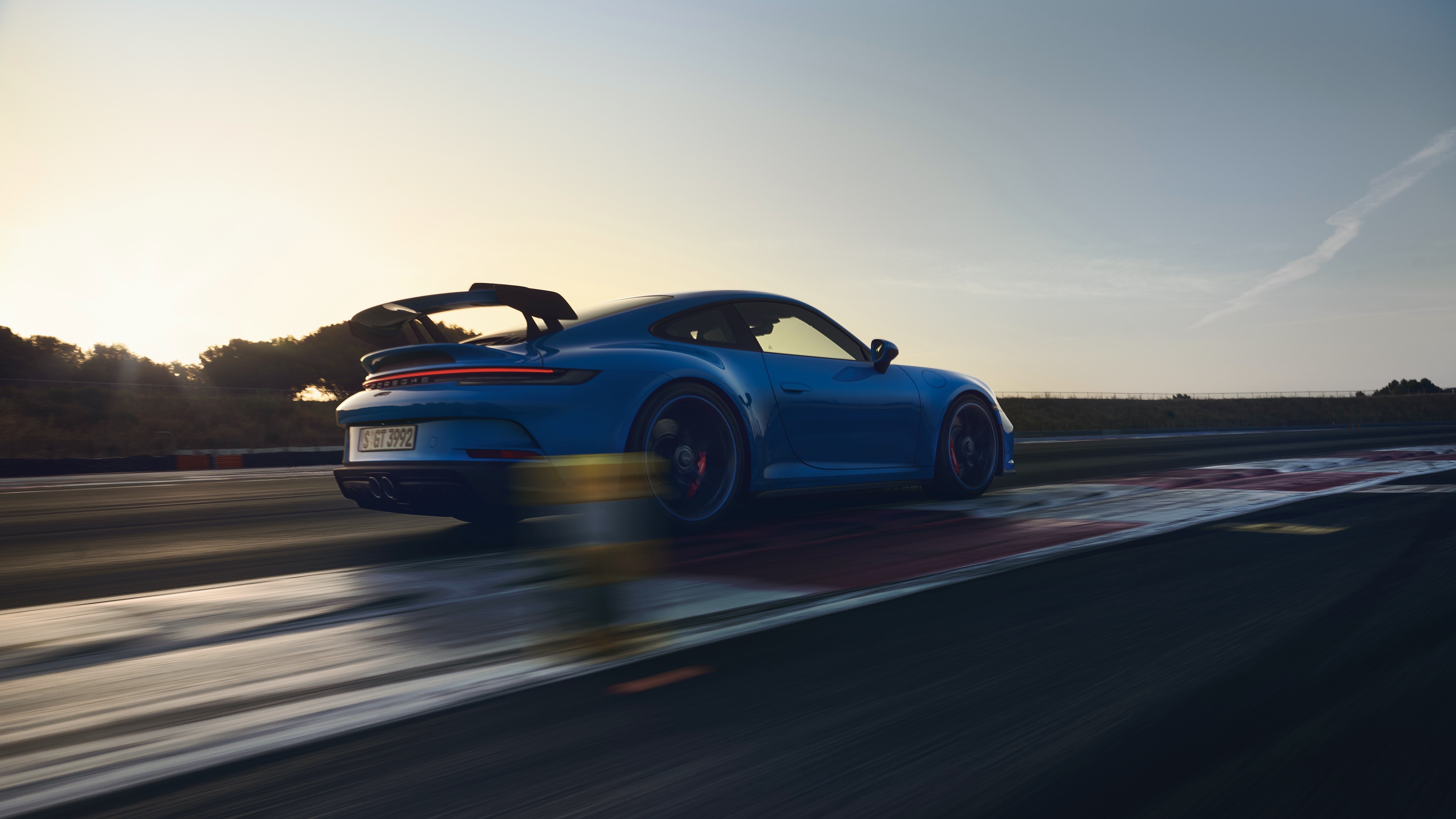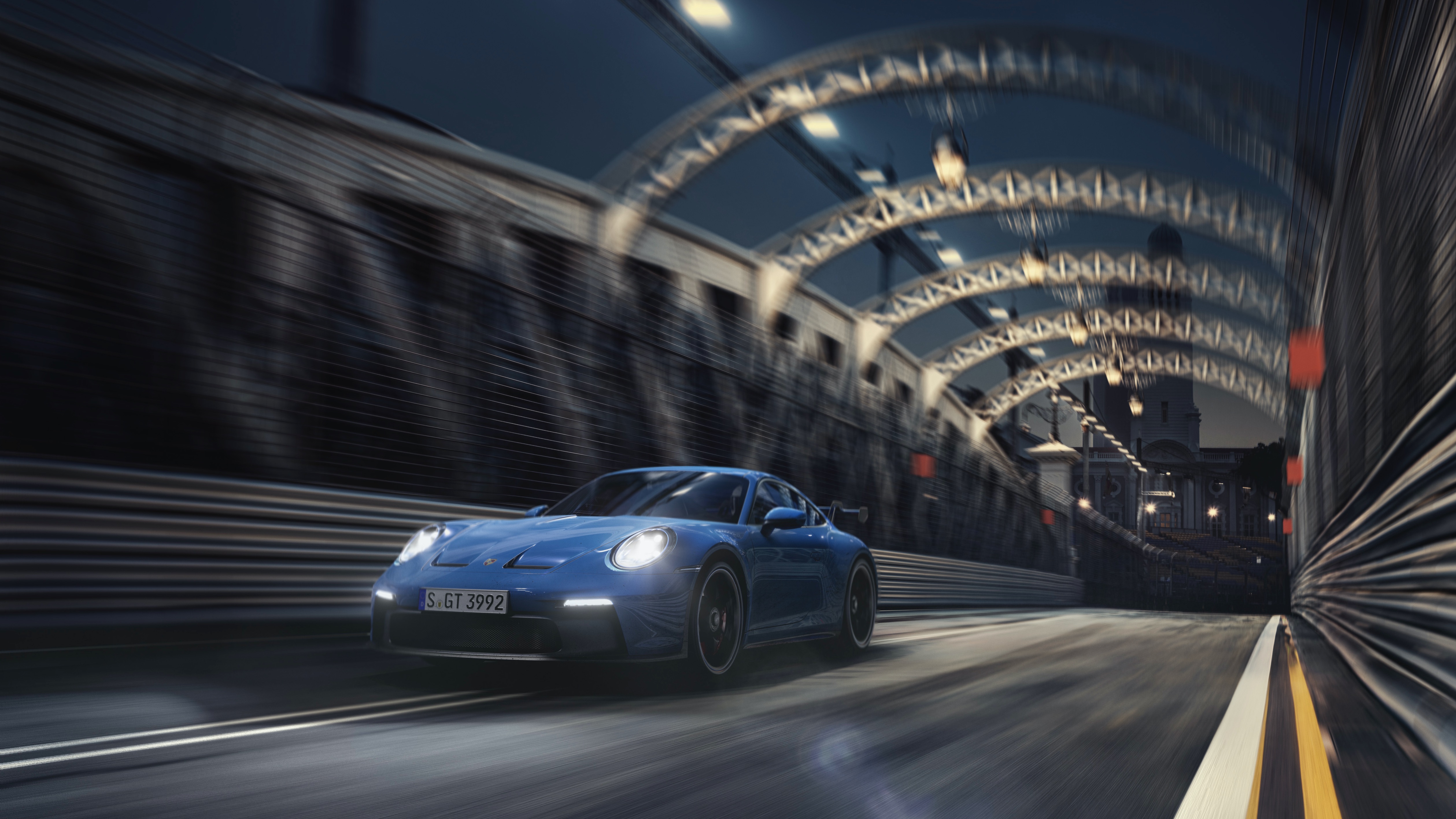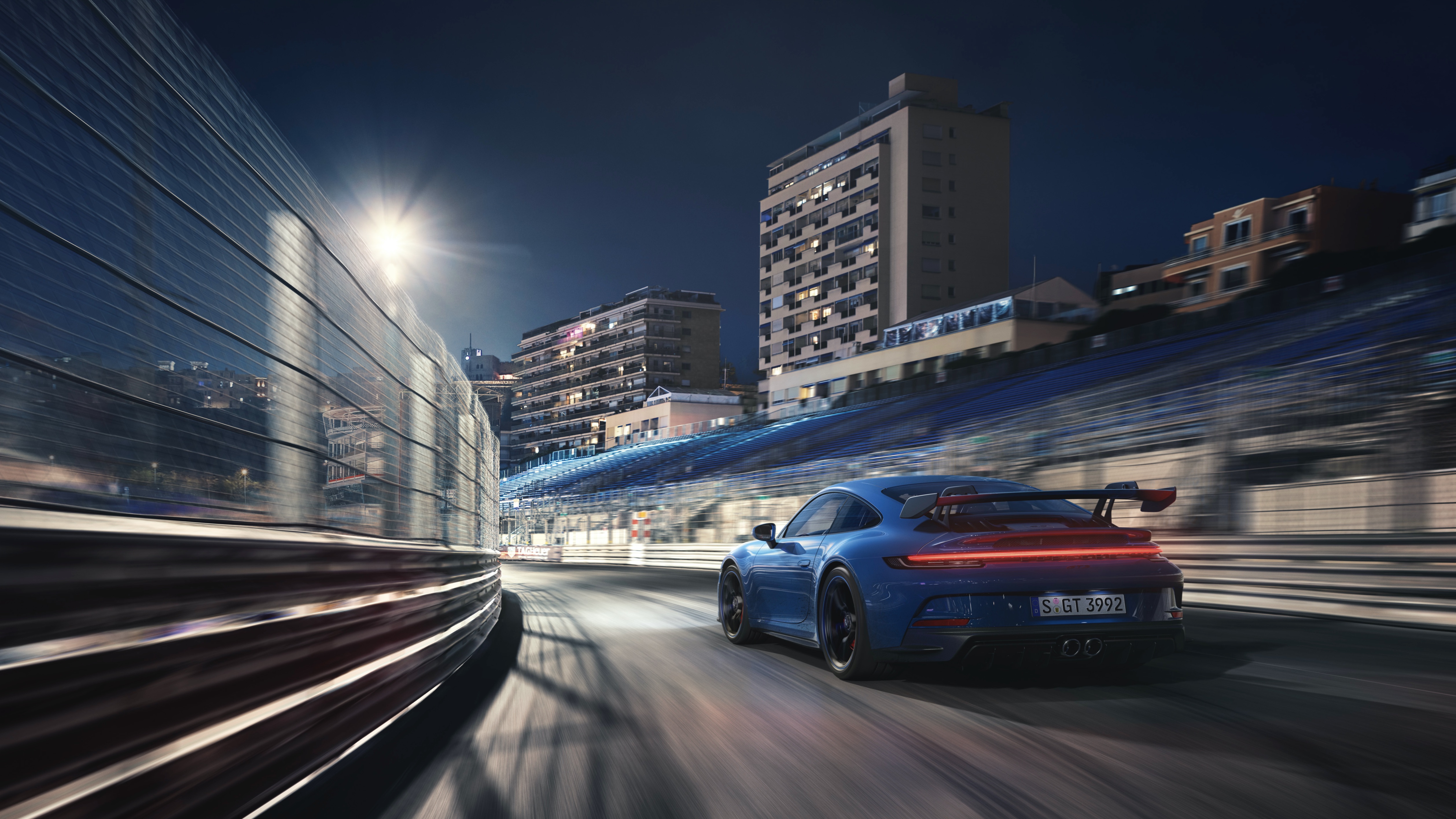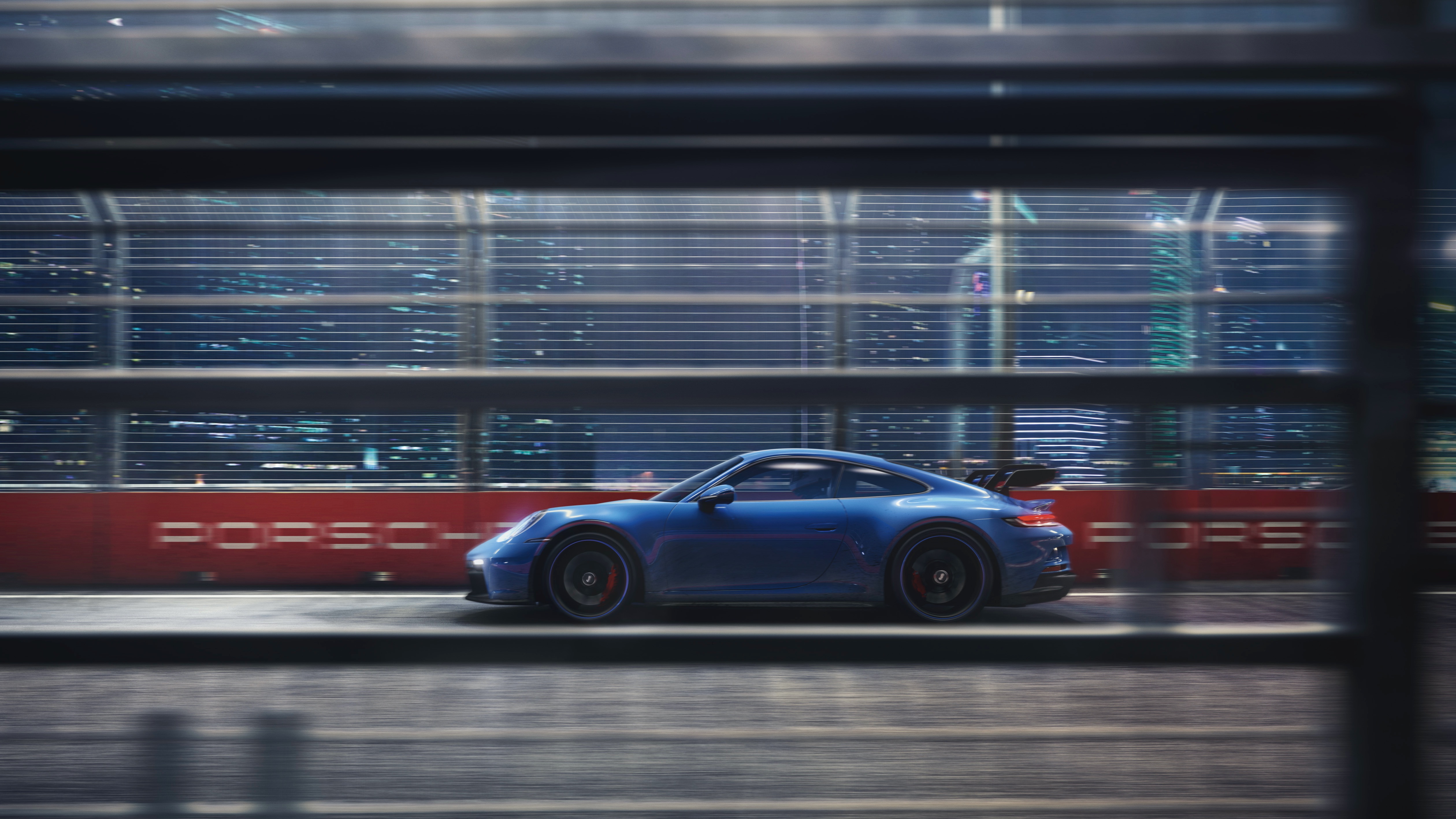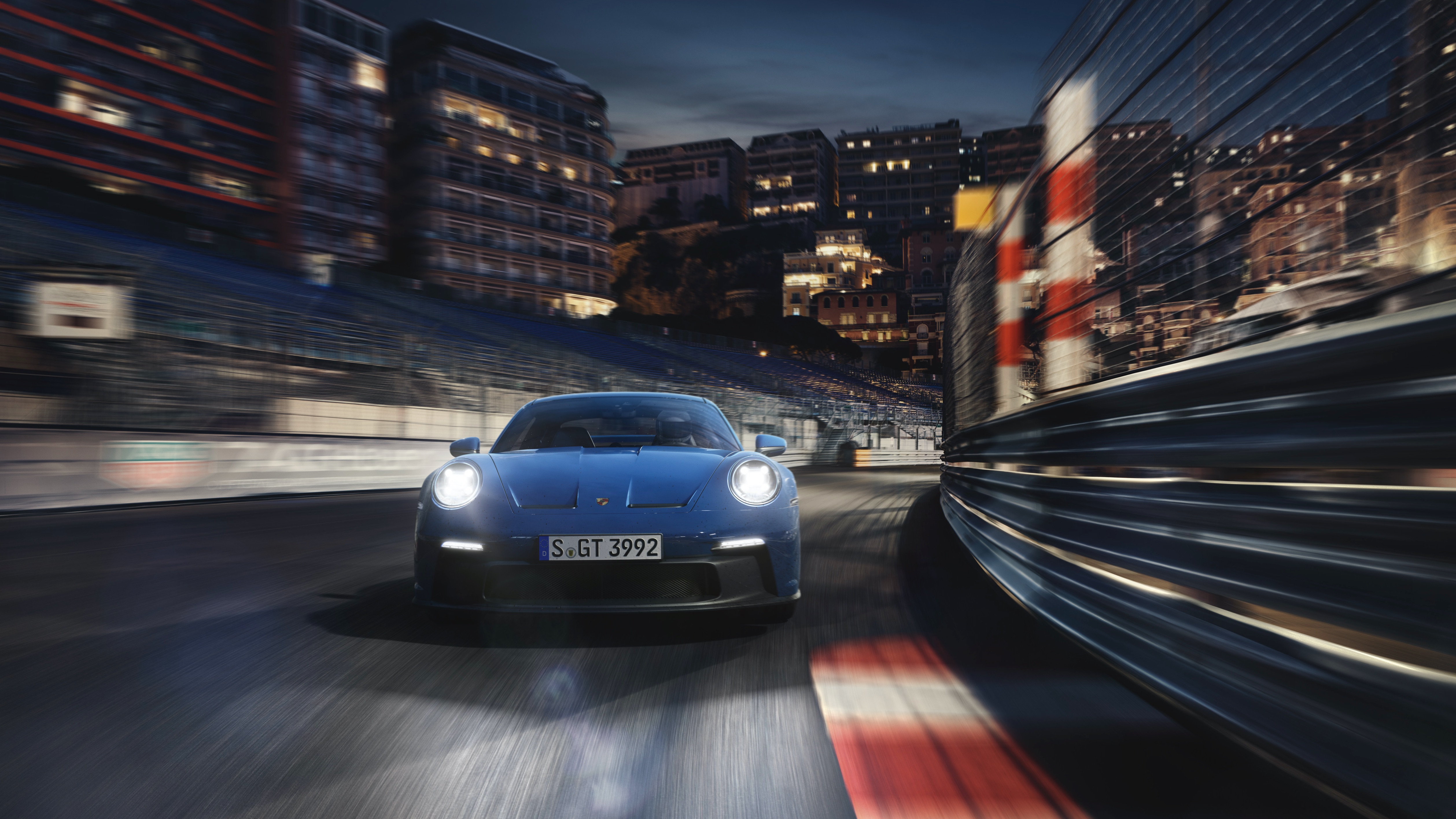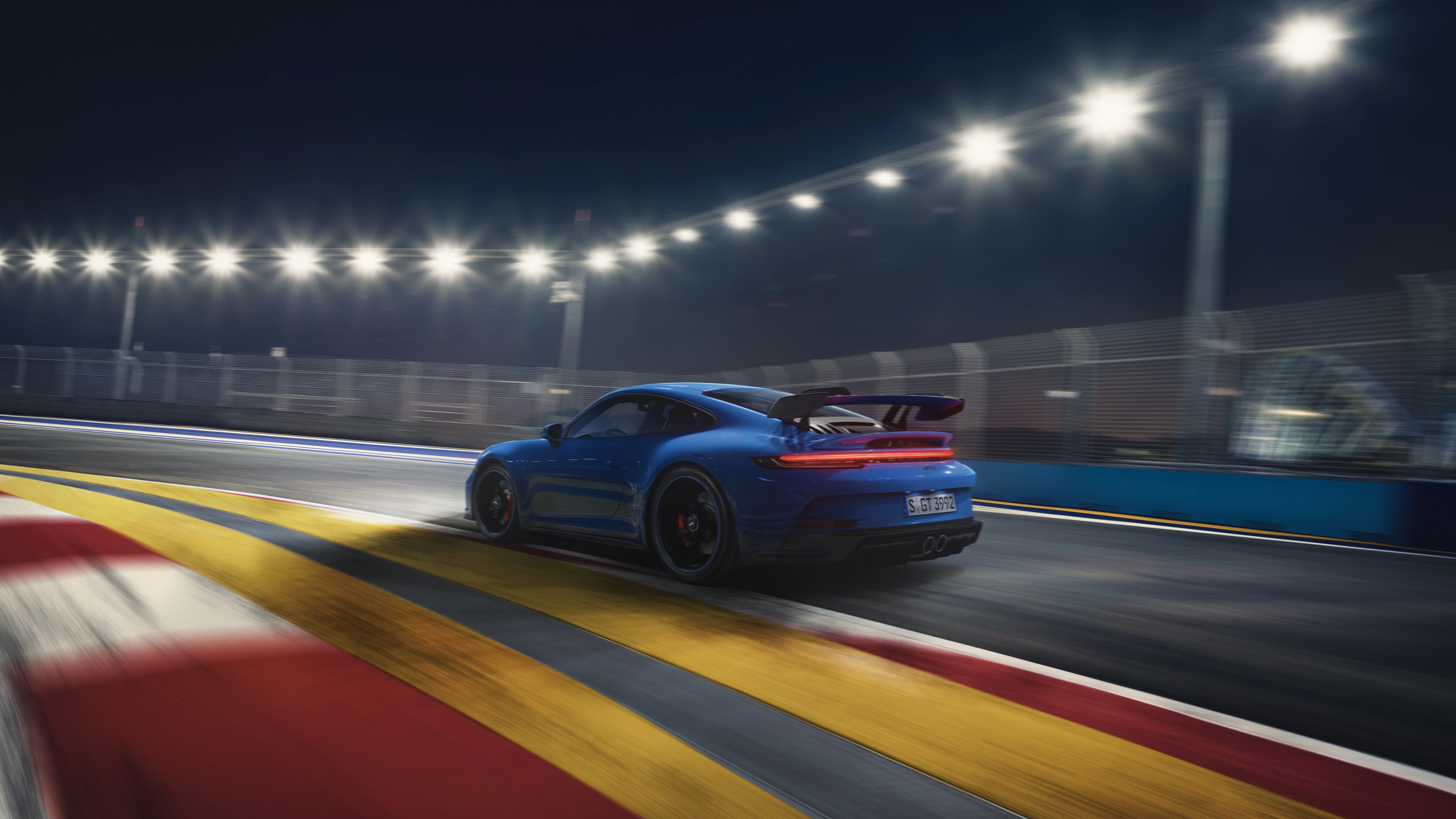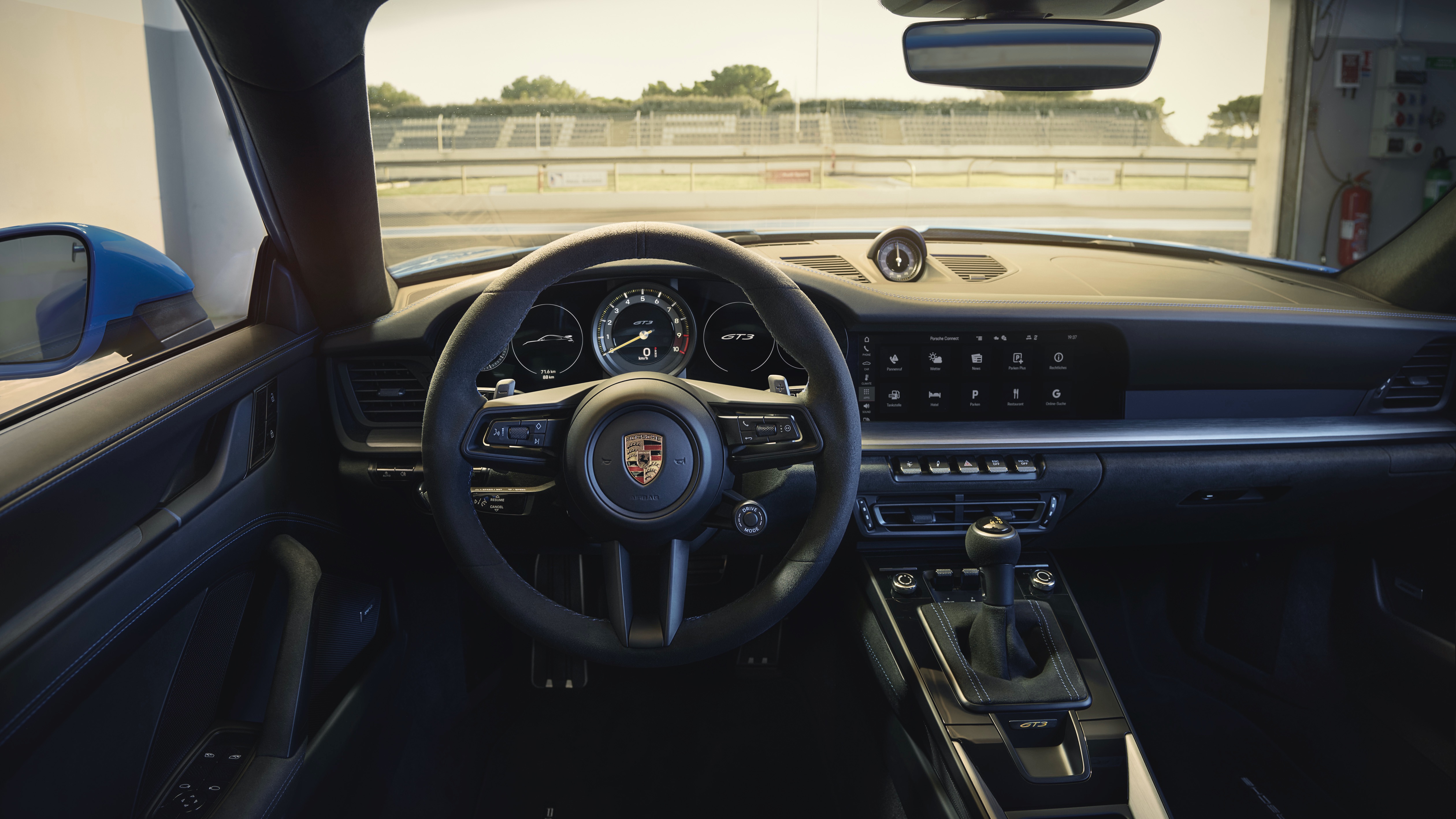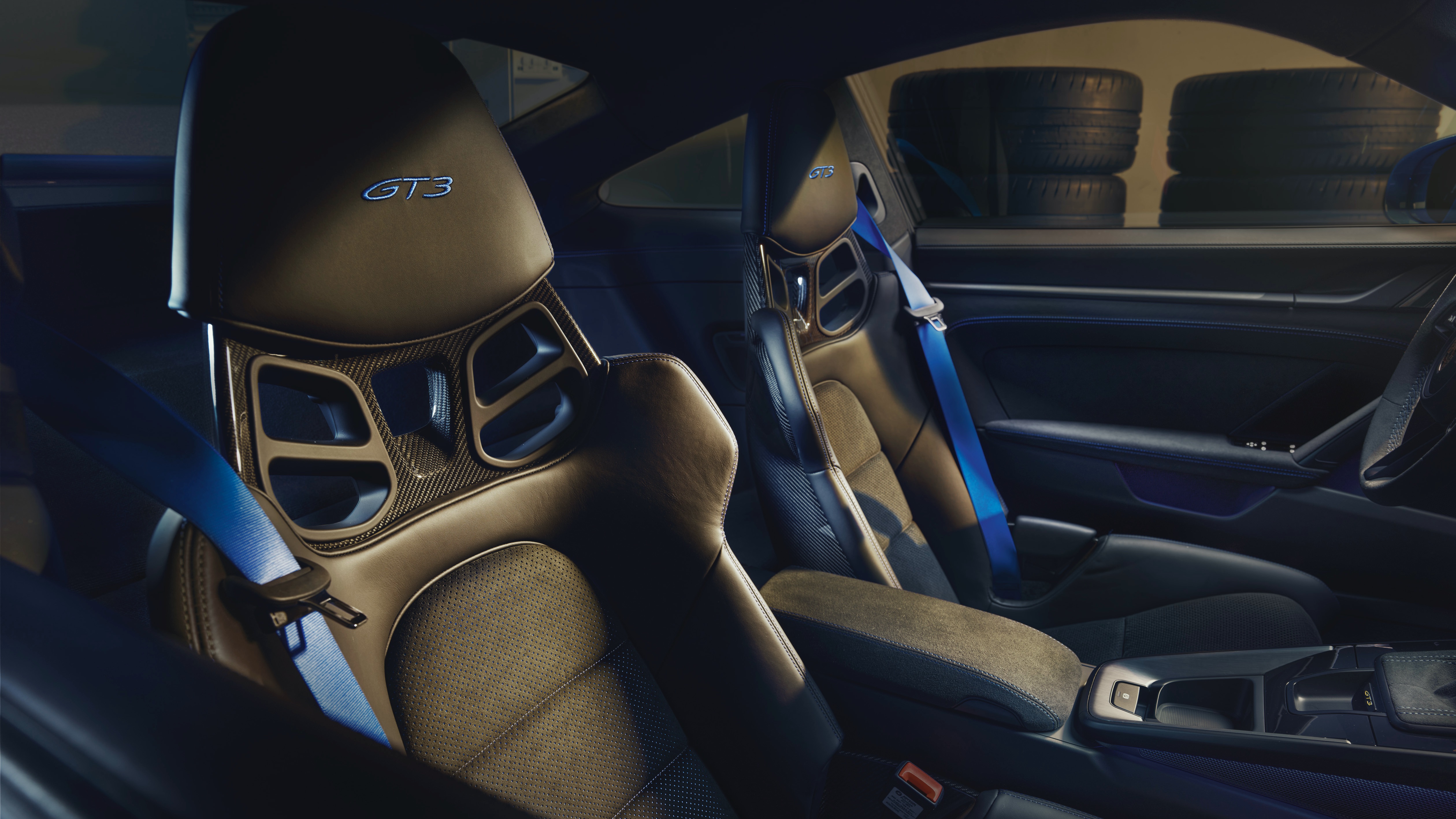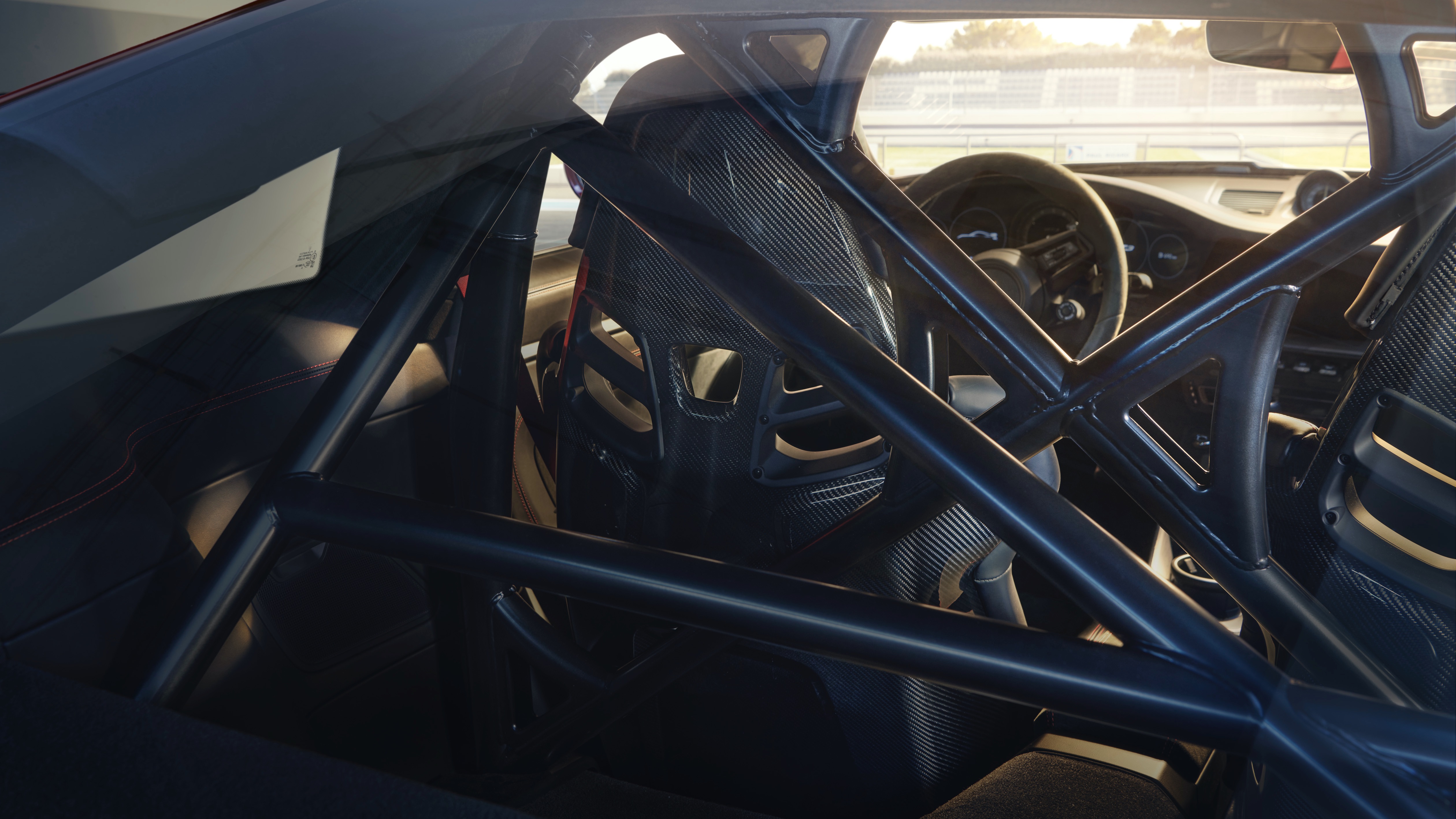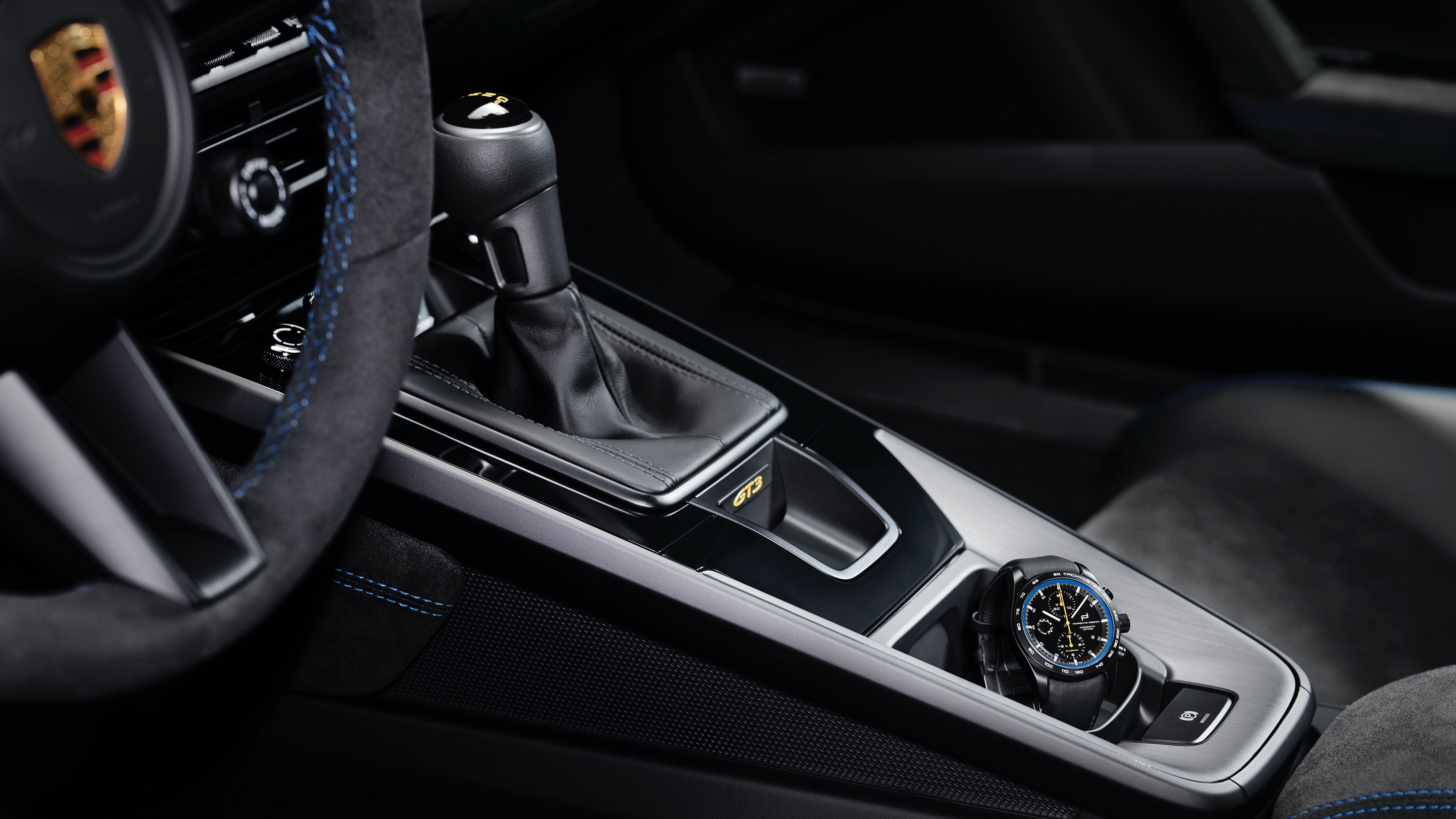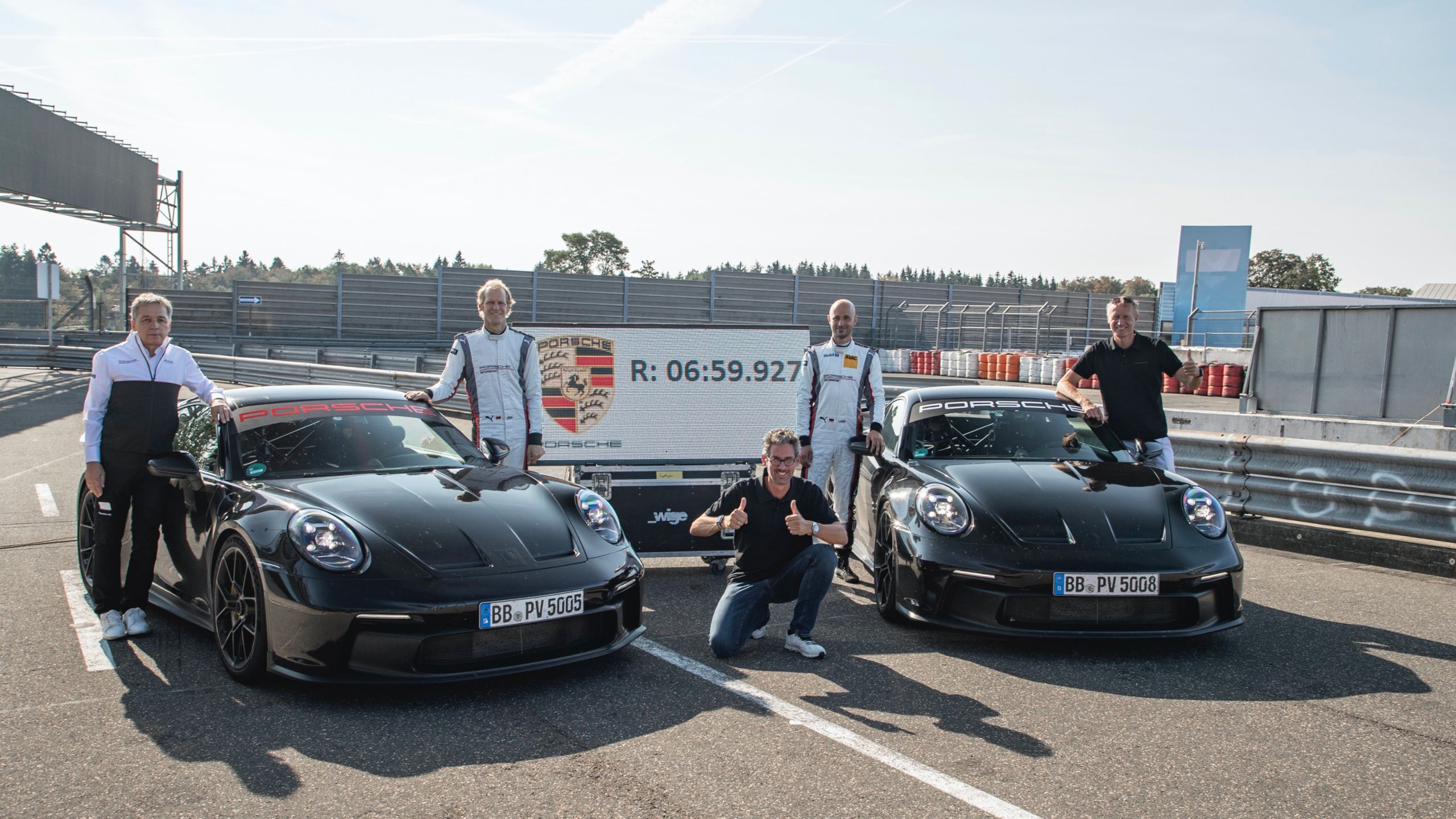Porsche 911 GT3 (992)
Introduction
Porsche unveiled its new 992-generation Porsche 911 GT3 via digital livestream on YouTube. First deliveries are currently scheduled to begin sometime in the later half of 2021, where it may likely be designated as a 2022 model. This new GT3 becomes the seventh iteration of one of Porsche’s most established and beloved automobiles. More importantly, it continues to embody the spirit of previous GT3 models by amalgamating all that is awesome about the 911 – and the Porsche brand – in a single road car.
The first Porsche bigwig introduced by presenter Sarah Elsser to offer insight into the project, was Dr. Frank-Steffen Walliser – former Porsche-Motorsport chief and current VP of the 911 model line. Dr. Walliser began by speaking candidly about the pressures associated with perpetually improving the GT3, but felt that the development team has fulfilled this goal with hard work; all of this, while facing the monumental challenge of navigating stricter emissions regulations and an industry-wide transition to EVs.
Andreas Preuninger – Director of Porsche’s GT program – was the next appear, first by driving the GT3 from behind the curtains and onto the stage, while making sure to throw in a few revs of the engine to excite the viewers. Once out of the car, he immediately reiterates the tremendous undertaking that was required to create the 992 GT3, stating that it was “…the most complex, demanding task over the last three and a half years…” but asserts that “…the end product is the most extreme and exciting GT3 ever made.”
Finally, testimonials by Porsche racing legends Jörg Bergmeister, Lars Kern and Walter Röhrl really hit home just how incredible the car is, from sources that are as credible as it gets. All of them were particularly impressed by how much an improvement the car was compared to its predecessors, justifying the earlier proclamations made by Walliser and Preuninger. Below are some key takeaways from the presentation.
Presentation Synopsis
Walliser: He talks about improving the naturally-aspirated engine, aerodynamics, chassis and suspension for the 992 GT3. Aside from the obvious technical features needed to make the GT3 better than ever, Walliser displays his deep-rooted understanding of driving enjoyment, depicting how important it was to preserve the spirit of the GT3 car from previous years, and “…bring this baby to life”.
To him, the GT3 is the 911. This is something he says
“…can be immediately understood when driving in the countryside, or at the race track. That is the essence of the GT3 and what has made it so special over all the years.”
Getting back into the technical side of things, Dr. Walliser would go on to iterate that while the new GT3 has a bigger footprint, the extensive use of lightweight materials throughout have kept the weight the same as its predecessor. He glosses over a number or items, such as a carbon-fiber roof, carbon-fiber hood and ultra-thin glass, which Preuninger would go into a bit more detail later on.
Preuninger: When speaking about the technical details of the GT3, Preuninger starts by mentioning the 4.0L naturally-aspirated engine with a 9,000 rpm redline, which carries over from its predecessor with some improvements. The 510 PS (502 hp) engine he says, is “…one of the most emotionally involving engines out there.”
But the enhancements don’t stop there. “Bigger wheels, bigger brakes, wider rims.” In normal circumstances, this means more weight, which he addresses by stating “It’s a little bigger…a little bit more competent. It needed some lightweight trickery to keep the weight down, and that is dispersed all over the car. So, all boxes ticked.”
How is this achieved? He points to the carbon-fiber hood, roof and rear wing mentioned earlier by Walliser. Also introduced were some things that weren’t shown up close, such as a super lightweight battery, lighter wheels, carbon-fiber cross members, lightweight interior appointments, etc. The weight reduction was very much an exercise of shedding “5 kg here, another 1 kg there, 3 kg somewhere else, and so on”.
The end result is a weight of just 1,435 kg, hitting the “sweet spot for a driver’s car and perfect track tool for the weekend.” Essentially, the 992 GT3 has achieved the same weight as its predecessor, but is loaded with a lot more technology. For the first time, a double wishbone suspension configuration is used in the front of the car. One of the most visually notable changes is the swan-neck rear wing derived from the 911 RSR competition car, which further emphasizes the link between Porsche’s race cars and its road cars. “What works on a race car, works on a street car, doesn’t it?”
Bergmeister: “Obviously, as a race car driver, when you get in a street car you have to lower your expectations. But on that car especially, I was shocked, how good it is… it’s so close to a race car, it’s really, really impressive.” As part of a response during the Q&A session, Bergmeister remarked that the GT3 impressed him most in the high speed sections of the Nürburgring, and that it was comparable to the 991.2 GT3 RS. “It hardly pitches when you brake, transition phases are very neutral. It has more downforce. It is the best street car we’ve ever driven in our lives“.
The 992 GT3 achieved a sub-7-minute (6:59.927) lap time at the Nürburgring. This is an absolutely insane, 17-seconds-faster than its predecessor and essentially the same time as the 991.2 GT3 RS, backing up all statements made by Bergmeister, Kern and Röhrl. This also sets the tone for the soon-to-follow GT3 RS – will a 6:40 lap time be possible?! Shortly after the livestream, Porsche uploaded onboard footage at the Nordschleife with Lars Kern behind the wheel, as well as the official ad for the car.
Engine & Performance
- Engine Type & Size: 4.0L naturally-aspirated flat-6
- Horsepower: 502 hp @ 8,400 rpm
- Torque: 346 lb-ft @ 6,250 rpm
- Transmission: 7-speed PDK, 6-speed manual
- 0-60 mph: 3.2 seconds (PDK), 3.7 seconds (manual)
- Top Speed: 197 mph
Porsche has continued the use of the naturally-aspirated 4.0L 9A1 flat-6 power plant in the 2022 Porsche 911 GT3. The only key differences between the engine used in the race car and the one used in the 992 GT3, are the exhaust system and ECU. Otherwise, the two engines share virtually all the same components, such as individual throttle bodies. As such, the new GT3 needed no “sound engineering” and inherently sounds amazing. With its astronomical 9,000 rpm redline, the GT3 produces 502 hp @ 8,400 rpm and 346 lb-ft of torque @ 6,250 rpm.
The GT3 will continue using the 7-speed PDK transmission, instead of a version of the 8-speed used in the rest of the 992 line-up. In essence, this saves weight (40 lbs) and makes for a better synergy with the GT3 and its intended application. But if you’d like a more hands-on approach, Porsche will offer the new GT3 with an optional 6-speed manual transmission as well.
Purists, rejoice! Walliser said that we shouldn’t count on the GT3 going electric or even hybrid, anytime too soon. It is much more likely that Porsche will transition to using synthetic fuels for motorsport and its GT line of production cars, before even considering going full-on EV. This aligns with Porsche’s intention to keep the naturally-aspirated engine alive for as long as possible – regulations and emissions standards will serve as the eventual ultimatum.
Chassis & Handling
Aerodynamics & Weight Reduction
The new 992 GT3 spent more than 160 hours across 700 simulation sessions in the wind tunnel. It generates 50% more downforce than its predecessor, and up to 150% more downforce in its “high downforce” setting. For the first time, the GT3 features an adjustable front diffuser and a fully closed rear diffuser, which on its own generates 60 kg of downforce at top speed. This means that now, both front and rear aerodynamic components are fully adjustable and can be manually set to one of four positions.
Its low weight of just 1,435 kg is achieved with a myriad of lightweight components. This includes a carbon-fiber hood, roof and rear wing, along with other items such as a super lightweight battery, lighter wheels, ultra-thin glass, carbon-fiber cross members, and lightweight interior appointments. Essentially, the 992 GT3 has achieved the same weight as its predecessor, but is loaded with a lot more technology.
Suspension & Chassis Control Systems
Porsche’s seventh iteration of the GT3, shows an unwavering dedication to the precision that has influenced the GT line of cars since day one. Inspired by the 2013 911 RSR competition car, the 2022 911 GT3 will receive a new front suspension setup consisting of unequal-length control arms instead of conventional struts, making it the first time a double wishbone suspension configuration is used in the front of a GT3. This will provide better tire contact through turns and during moments of compression and rebounding. Porsche’s new adaptive dampers are capable of adjusting every 10 milliseconds, which means the spring rates have doubled without affecting the ride quality of the GT3.
There are three available driving modes: Normal, Sport and Track, which all provide varying degrees of driver-aid involvement and chassis settings. Aside from providing the most firm, performance-biased setup with the least amount of computer-control, initiating Track mode also changes the instrumentation and displays to “Track View”. This compiles all pertinent information to the immediate field-of-view of the driver. Important details such as oil temperature, oil pressure, tire pressures and shift indicators, are all in plain sight and easily visible.
Brakes & Tires
Porsche will continue to offer the GT3 standard with cast-iron rotors and Michelin Pilot Sport Cup 2 tires. Likewise, upgrading to carbon-ceramic brakes and Michelin Pilot Sport Cup 2R tires, remain as options.
Design, Styling & Interior
Overall, the silhouette of the new 911 GT3 remains a largely familiar one – and that’s not a bad thing. In fact, this is probably great news for Porsche and GT3 enthusiasts, who would contend that there was never anything wrong with the previous GT3 in the first place. One of the most visually notable changes is the “swan-neck” rear wing derived from the 911 RSR competition car, which further emphasizes the link between Porsche’s race cars and its road cars.
The Club Sport Package (roll cage, 4-pt harnesses) will be a no cost option. However, this will probably only be for the European markets. This package was not available on past iterations in North America due to safety regulations. I anticipate that the aftermarket will step-up to fill the void with some quality products, though.
The Touring trim was confirmed by Preuninger, and there’s no reason this won’t be available state-side once again. Though he believes the standard trim is the most complete representation of the GT3, he acknowledges the appeal of the GT3 Touring for the “gentleman” crowd, who want something a bit more understated. He goes on to affirm that the Touring trim is very popular, and will therefore make a definite return for the 992.
Walliser also announced that Paint to Sample (aka, custom paint colors) will be available for the GT3 line-up. The program will commence sometime later this year. On the subject of paint, the new GT3 will be available in 14 standard colors when orders are open.
The emotions and the joy of driving. That’s why we desire the car from the heart to the stomach – Andreas Preuninger
Image Gallery
Official Videos
Video Review Gallery
Official Press Release
The double wishbone front axle layout and sophisticated aerodynamics with swan neck rear wing and striking diffuser originate from the successful GT race car 911 RSR and the 375 kW (510 PS; 911 GT3: Fuel consumption combined 13.3 – 12.4 l/100 km, CO2 emissions combined 304 – 283 g/km) four-litre six-cylinder boxer engine is based on the drivetrain of the 911 GT3 R, tried and tested in endurance racing. The acoustically impressive, high-revving engine is also used practically unchanged in the new 911 GT3 Cup. The result is a brilliant driving machine: efficient and emotional, precise and high-performance – perfect for the circuit and superb for everyday use.
The distinctive strength of the 911 GT3 lies in the sum of its characteristics. With a top speed of 320 km/h (911 GT3 with MT: Fuel consumption combined 13.3 l/100 km, CO2 emissions combined 304 g/km) and 318 km/h with PDK (911 GT3 with PDK: Fuel consumption combined 12.4 l/100 km, CO2 emissions combined 283 g/km) it is even faster than the previous 911 GT3 RS. It accelerates from zero to 100 km/h in 3.4 seconds. Porsche also offers the new model with a six-speed manual transmission for a particularly puristic driving experience.
Aerodynamics from motor racing
The sophisticated aerodynamics benefit from the experiences gained from motor racing and generate significantly more downforce without noticeably affecting the drag coefficient. In the performance position, the manually set wing and diffuser elements significantly increase the aerodynamic pressure for high cornering speeds.
This is, however, reserved strictly for outings on the circuit, as it is there that the 911 GT3 can play all its trump cards. During final testing, it lapped the Nuerburgring-Nordschleife, traditionally the ultimate proving ground for all sports cars developed by Porsche, over 17 seconds quicker than its predecessor. Development driver Lars Kern took just 6:59.927 minutes for a full 20.8-kilometre lap. The shorter 20.6-kilometre track, which had previously served as a benchmark, was completed by the 911 GT3 in 6:55.2 minutes. Running on the optionally available Michelin Pilot Sport Cup 2 R tyres, the new model consistently delivered its performance over several laps in the expert hands of Porsche brand ambassador Jörg Bergmeister. For Bergmeister, it is “by far the best production car” that the experienced professional driver has ever driven in the “Green Hell”.
Despite a wider body, larger wheels and additional technical features, the weight of the new GT3 is on a par with its predecessor. With manual gearbox it weighs 1.418 kilograms, with PDK 1.435 kilograms. The front bonnet made of carbon fibre-reinforced plastic (CFRP), lightweight glass windows, optimised brake discs and forged light-alloy wheels ensure weight discipline, as does the cover for the rear seat compartment. The lightweight sports exhaust system reduces the weight by no less than ten kilograms. With infinitely electrically adjustable exhaust flaps, it harmonises a highly emotional sound experience with the Euro 6d ISC FCM (EU6 AP) emissions standard. The combined consumption of the 911 GT3 is 13.3 litres/100 km (PDK 12.4).
Cockpit of the new 911 GT3 has racing genes
Its racing genes are expressed in practically all the details of the new 911 GT3. The cockpit is in line with the current model generation. A new feature is the track screen: at the touch of a button, it reduces the digital displays to the left and right of the central rev counter, which reaches up to 10,000 revs, to information such as tyre pressure indicator, oil pressure, oil temperature, fuel tank level and water temperature, which are essential when driving on the circuit. It also includes a visual shift assistant with coloured bars to the left and right of the rev counter and a shift light derived from Motorsport.


